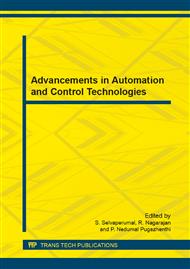p.3
p.7
p.13
p.19
p.26
p.31
p.35
p.40
Design and Implementation of GA Based Selective Harmonic Elimination in Modified Cascaded Multilevel Inverter
Abstract:
- The emergence of multilevel inverters has been in increase since the last decade. These new types of converters are suitable for high voltage and high power application due to their ability to synthesize waveforms with better harmonic spectrum. Numerous topologies have been introduced and widely studied for utility and induction billet applications. In this paper, proposed a Modified Multilevel Inverter (MMI) is eleven Levels. This proposed MMI consists of less number of switches to attain eleven levels when compared to the traditional cascaded multilevel inverter to attain the same level. As a result, voltage current stress across switches gets reduced, so that power loss gets reduced in the system. Secondly, an effective pulse width modulation (PWM) approach that can be utilized successfully with high control accuracy is combination of selective harmonic elimination and pulse width modulation (SHEPWM).This technique offers many advantages other PWM techniques including direct control over output waveform harmonics, and the ability to eliminate third, fifth and seventh order harmonics.
Info:
Periodical:
Pages:
3-6
Citation:
Online since:
June 2014
Authors:
Price:
Сopyright:
© 2014 Trans Tech Publications Ltd. All Rights Reserved
Share:
Citation:


